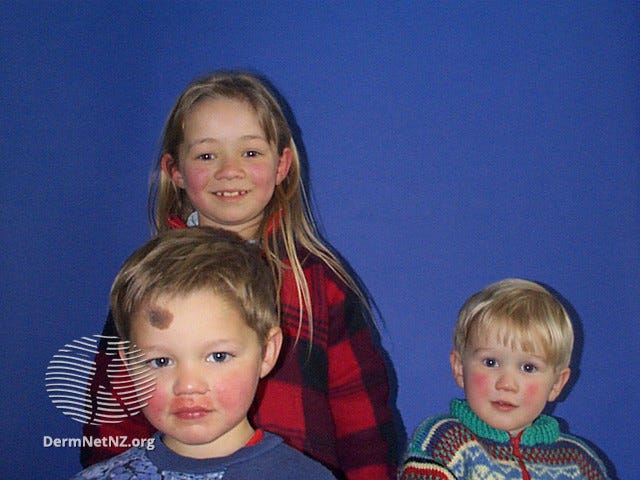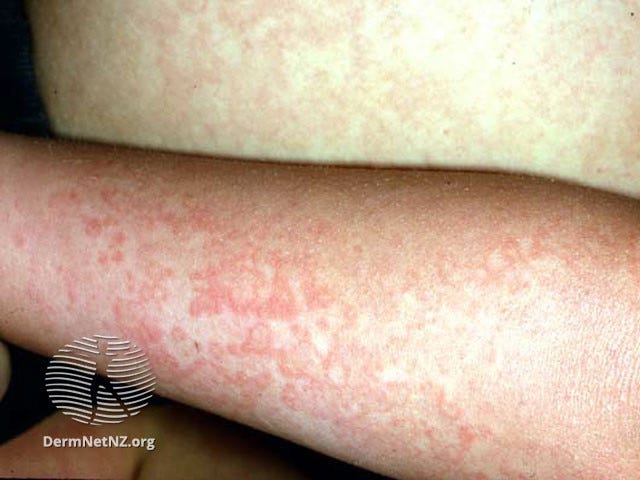Erythema Infectiosum or Fifth Disease
Erythema infectiosum or fifth disease is an illness caused by a specific virus - parvovirus B19. Fifth disease is often seen in school-aged children especially in the spring and summer months. The illness is more common in children than in adults. The symptoms are usually mild and may include: fever, runny nose, headache, and rash. Adults may also complain of joint pain. For many treatment is supportive care: fever control, hydration and tincture of time. The infection may be more severe in individuals who are immune suppressed, pregnant or have sickle cell disease.
The most recognizable feature of fifth disease is a bright red rash on the cheeks, called the “slapped cheek” rash, which can last 4-5 days. The rash spares around the mouth, so called peri-oral sparing/pallor. By the time the facial rash develops, the patient usually feels well, the viremia has resolved and the person is no longer contagious. This rash is thought to be immune-mediated.
Then, days after the facial rash develops, a maculopapular rash usually develops on the trunk and limbs. This rash does not itch and usually lasts about one week. The rash may also have a lacy or reticular appearance as it starts to resolve. (2)





